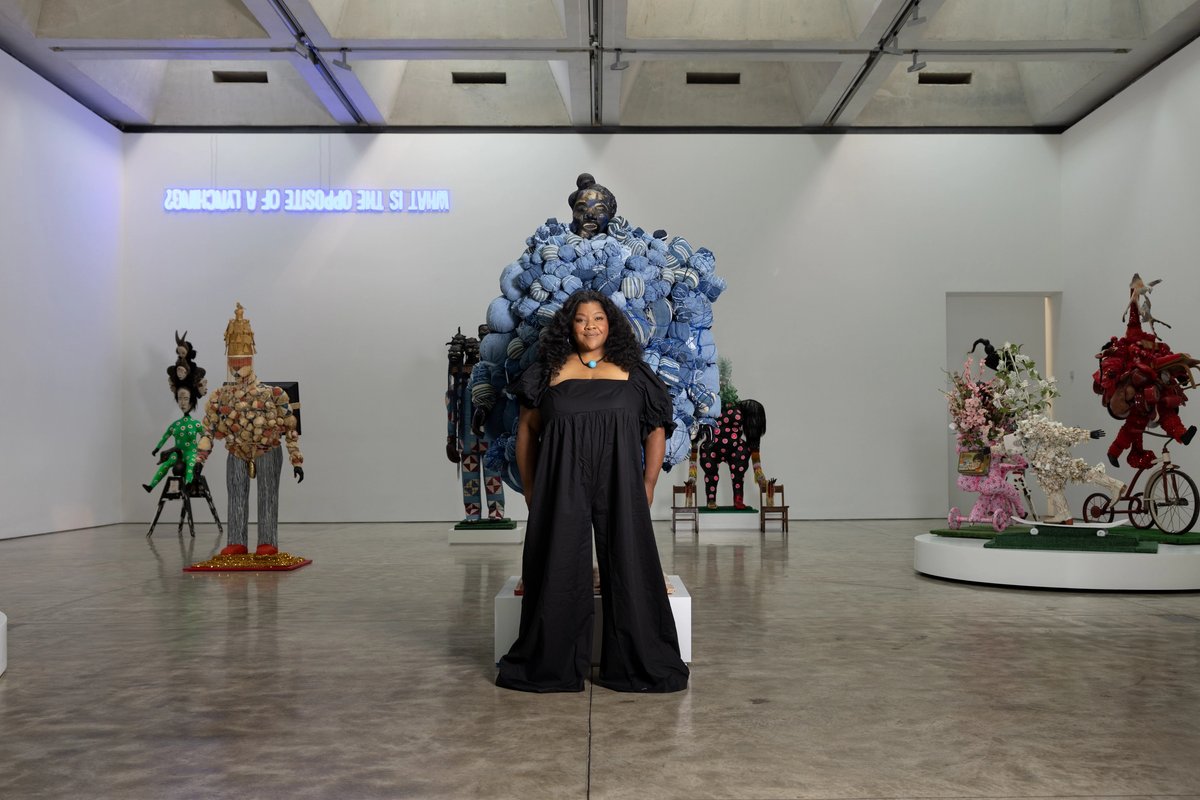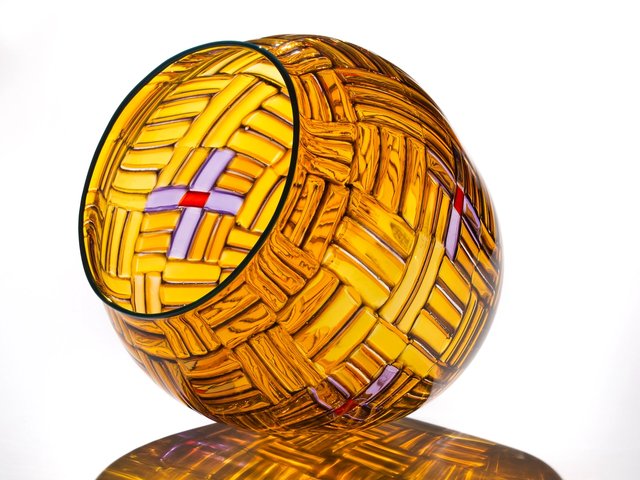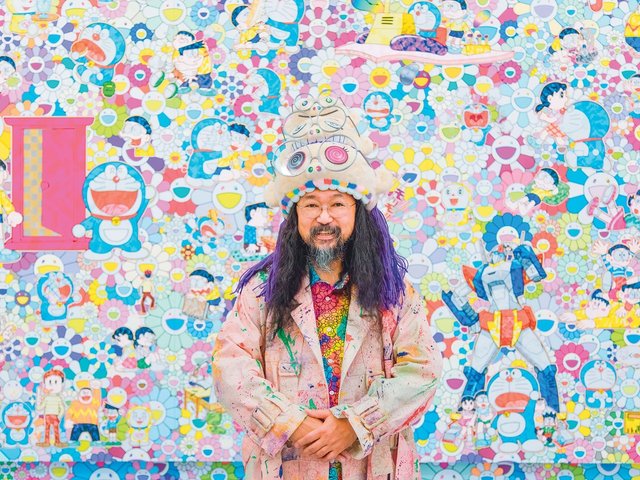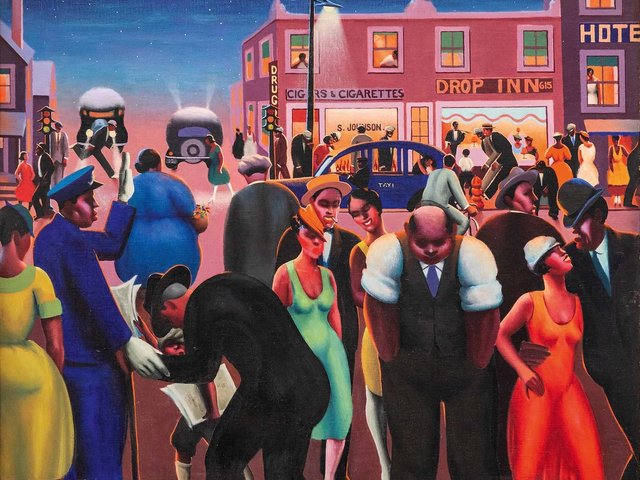It is rare these days to speak to an artist who is thoroughly certain of art’s place in the broader intellectual ecosystem. But vanessa german—a multi-disciplinary doyenne who styles her name in lowercase—takes rarity in stride. The self-taught “citizen artist” produces the kind of work that brims with spiritual self-assuredness, blurring the line between magic and the tactile impulse that undergirds her visual storytelling. Her totemic sculptures, communal rituals and enveloping installations collapse time to connect African diasporic ancestral knowledge with contemporary community practices, spanning activist and aesthetic concerns in a unique, folkloric language that centres Black feminist subjectivity.
Her current exhibition at the University of Chicago’s Richard and Mary L. Gray Center for Arts and Inquiry, At the end of this reality there is a bridge—the bridge is inside of you but not inside of your body. Take this bridge to get to the next _______, all of your friends are there; death is not real and we are all dj’s (until 15 December), is the result of her recent teaching fellowship at the university; german is its inaugural recipient. She led a course called Paraäcademia, inviting students to consider historically marginalised forms of learning that take place outside the institution. The works of art inspired by this interchange are a metaphysical fantasia of deeply felt, esoteric linkages, enacting spells through a new body of monumental rose-quartz “power figures” and precious-gem sculptures.
For german, art is vital in the most urgent sense of the word. “Art saved my life in many, many ways,” she says, and her reverence for the gift of creativity is evident in every gesture.
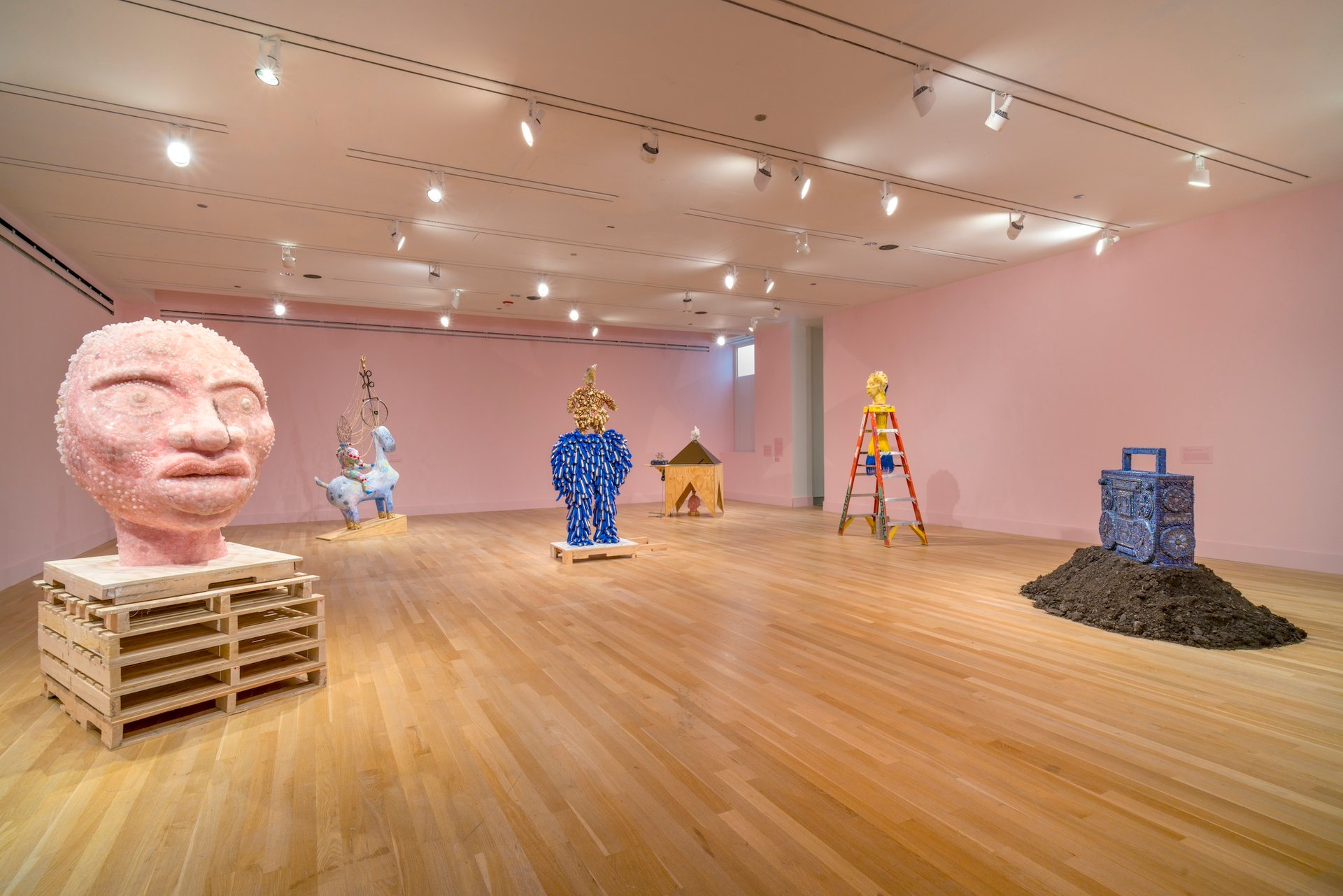
Installation view of vanessa german's Gray Center Fellowship Exhibition, 2024, at the Reva & David Logan Center for the Arts
Courtesy of the artist / Kasmin, New York; Logan Center Exhibitions; and the Richard and Mary L. Gray Center for Arts and Inquiry at the University of Chicago. Photo by Robert Chase Heishman and Robert Salazar
Born in Milwaukee and raised in Los Angeles, german (whose mother was a professional quiltmaker) has deep roots in Pittsburgh, where she worked at a non-profit helping underserved children in the neighbourhood of Homewood. In 2011, she founded the Love Front Porch, an initiative for local kids that immersed them in her art practice, which she moved onto her porch. Three years later, she expanded the space into ARThouse, combining a community studio, garden, outdoor theatre and artist residency—a testament to her commitment to radical, restorative justice through artistic freedom.
German has won some of the US’s most prestigious awards—including a Heinz Award for the Arts and a Louis Comfort Tiffany Foundation Grant—and her work can be found in permanent collections at institutions like the High Museum of Art in Atlanta and the Crystal Bridges Museum of American Art in Bentonville, Arkansas. The Art Newspaper caught up with german to talk about magic, social healing, experimental physics and the legacy of the late Afrofuturist musician Sun Ra.
The Art Newspaper: Can you explain the material choices you are making, specifically the choice of rose quartz in your recent works?
vanessa german: The first work that I made with rose quartz, I made when I was doing a show at Mount Holyoke College, where we invited the entire Mount Holyoke community to answer a series of questions about their lives and experiences. From the hundreds of cards we got, we got a healthy percentage of people who had a really distorted relationship with their own bodies. They thought they were ugly, they thought they were fat, and it was enough for them to write about and put anonymously in a box. There's a Diné prayer that talks about walking in beauty, so I made a pair of boots, thinking about the spiritual technology that is contained within rose quartz, what it’s been used for, where it came out of the earth and also the ways it holds space across a couple of different spectrums spiritually.
The colour of rose quartz, the pinkish-white, is one that has a relationship to the maternal spirit of creativity, nurturing and healing. I made a skateboard for Tyre Nichols and I did a portrait of George Floyd in rose quartz, thinking about how they were being murdered in the street and crying out for their mothers. This is a stone that holds the carrying power of nurturing, loving, mother love.
In the course at the University of Chicago, we started every class with a meditation. From this space, we worked with some of the ideas that came through in the readings. The students chose to do an entire series of walking meditations directed to caring for the community of Chicago, but also for themselves. And when you think about consciousness, it’s one entire field that separates into the fractal experience that every human being is having, like the fractal universe. That we are one and we are each a facet, a fact, a fractal of the whole. Using the rose quartz and all these different textures and pieces is a communication of that loving, healing, creative power to direct the healing of place, but also the creation of new places through that entire creative process of discussing what we want for ourselves and the world, the world we want to live in, and then actively focusing on that in meditation.
One of the things that we talked about in the course was how there is no local reality. A Nobel Prize in 2022 went to physicists who proved that reality is actually non-local and only exists in relation to the focus of your perceptive, conscious gaze. The rose quartz was a material that communicated the soul of that.
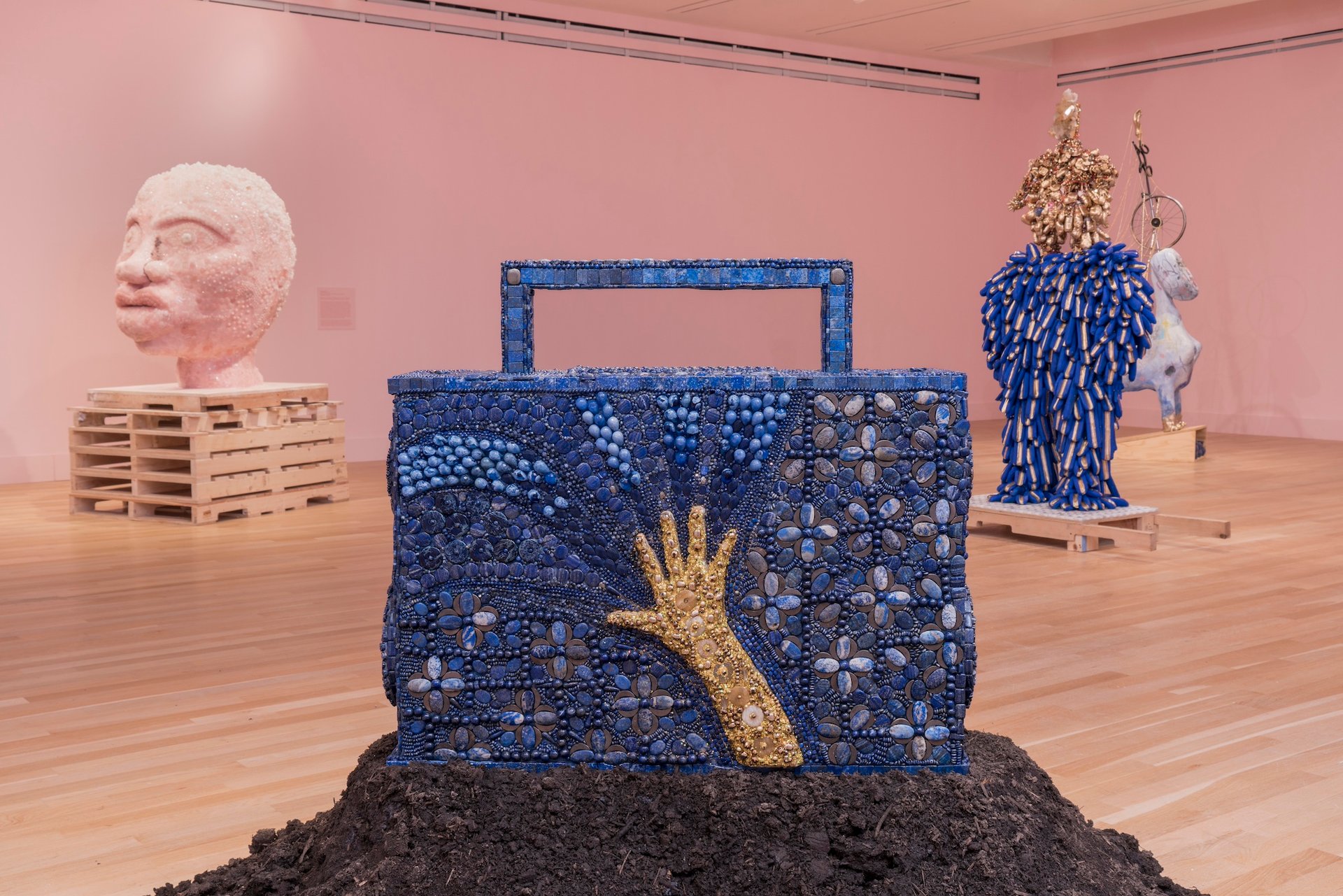
Installation view of vanessa german's Gray Center Fellowship Exhibition, 2024, at the Reva & David Logan Center for the Arts, featuring Master Blaster; or, Boombox from the 5th dimension (2024)
Courtesy of the artist / Kasmin, New York; Logan Center Exhibitions; and the Richard and Mary L. Gray Center for Arts and Inquiry at the University of Chicago. Photo by Robert Chase Heishman and Robert Salazar
In your capacity as a citizen artist, what is your desired relationship with the audience? Do you consider them collaborators?
It's natural to humans that when we see someone hurting or we are in a situation where we can’t actually do something for somebody, we’ll make something for someone, whether it is a meal or a card or a beautiful message. It's really ancient human technology. For my spirit, even since I was a kid, I would make things for people. People would tell me something that was going on in their life, and I would synthesise it and I would make something for them.
I grew up in Los Angeles in the 1980s and 90s, and there was a lot of violence. I remember, as a kid, seeing many sad, bitter, withdrawn adults. I started to ask questions about that. I would ask people what they wanted to do, if they could do whatever they wanted with their time. I found that I was meeting a lot of adults who made choices in their lives that were not for their whole selves, but for a compartmentalised fraction of themselves. They had a lot of regret. So I would make things to let people know that I had listened to them or that I cared about what they were saying, so much that it became a part of me.
I’m still the same human being I was when I was six or seven in Los Angeles. One of the true desires of my soul is to love people through connection and a meaningful, generative communion. I'm involved in a long line of people who make as a way to hold communion, community and the invisible energies that keep us and our bodies together.
In class, we invited the students to inhabit that magic for themselves. During the course, they’re reading about magic, they’re reading about wild magic, magic that just exists in the universe through your human presence, through the fact that you are a body and awake and aware.
Some of this work was inspired by the musician Sun Ra. Can you discuss the implications of Afrofuturism for your art?
I don’t know if I can! I can only say what happened to me. I’m working in Chicago. I don’t really know anything about Sun Ra, except that people were saying, “Sun Ra used to preach up the street.” I'm in the studio, and I keep getting this feeling that I've got to make this pyramid. I don't normally make geometric, architectural sculptures; I make figure-based sound objects. It’s quite aggravating to me for five months that I need to make a pyramid, and I can’t figure out how to do it, because it’s quite a lot of maths to figure out two different kinds of slope angles off the centre point.
So I’m in the studio. We finally cut this pyramid, put it together, and a Sun Ra song comes on my production manager's Spotify playlist, which has never happened before. I listen to the song, I go to the hotel, and then a Sun Ra video pops up on YouTube. I watch this video about Sun Ra, and there is a five-sided gold pyramid that he pulls out from under his chair and puts on his head.

vanessa german, Dr. Massey and The Nature of the Known Universe, 2024 Courtesy of the artist / Kasmin, New York; Logan Center Exhibitions; and the Richard and Mary L. Gray Center for Arts and Inquiry at the University of Chicago. Photo by Robert Chase Heishman and Robert Salazar
I think about Sun Ra telling people that he was from Saturn and “Space is the place” in the context of Afrofuturism. I think about the expansive, soulful imagination of Black folks making and creating a world, and realities and technologies that are fully supportive of the wholeness of their beings, and recognising that the being is a conscious and a cosmic existence. It’s Black folks up in a world recognising a deep amount of hostility to Black people inhabiting any world. White supremacy wants to cut and control.
I think about how people didn’t take Sun Ra seriously when he said he’s from Saturn, but I believe he's from Saturn. I believe that he's telling us he’s from Saturn, and that's really meaningful. It’s not just that he’s telling us where he’s from, he’s telling us where he’s not from. He’s telling us that he has capabilities beyond our wildest imaginations, because we don’t know what’s possible for a being from Saturn.
I’m one of many people on this planet who feel alien, but I also find the greatest, truest joy inhabiting a realm of soulful, infinite consciousness. I felt like someone was visiting me in the studio and telling me the whole time to stay aware, stay awake and pay very close attention to the subtle magic of the moments that we live inside of, and to not only pay attention to those but really ask ourselves: Why do we live this way? Why does it feel like this? I feel like I got to hang out with Sun Ra after the last six months in Chicago.
When you are creating new work, is there a spiritual procedure or process that typically happens? Do you feel that you are being visited or connecting with ideas coming from a different place?
I feel like that about my existence as a human being. I’ve felt like this since I was a little kid. I used to get a sharp pencil and a piece of blank paper, and my hands used to shake because I knew that it meant anything was possible. I always had this sense that, at that moment of entropy, between nothing happening and whatever could come, I was at my most potent as a being and the most present to the now of that moment. I have felt like that my whole life. I feel like I'm connected to every human being wherever I am. I feel I have access to a very clear technology of my own consciousness.
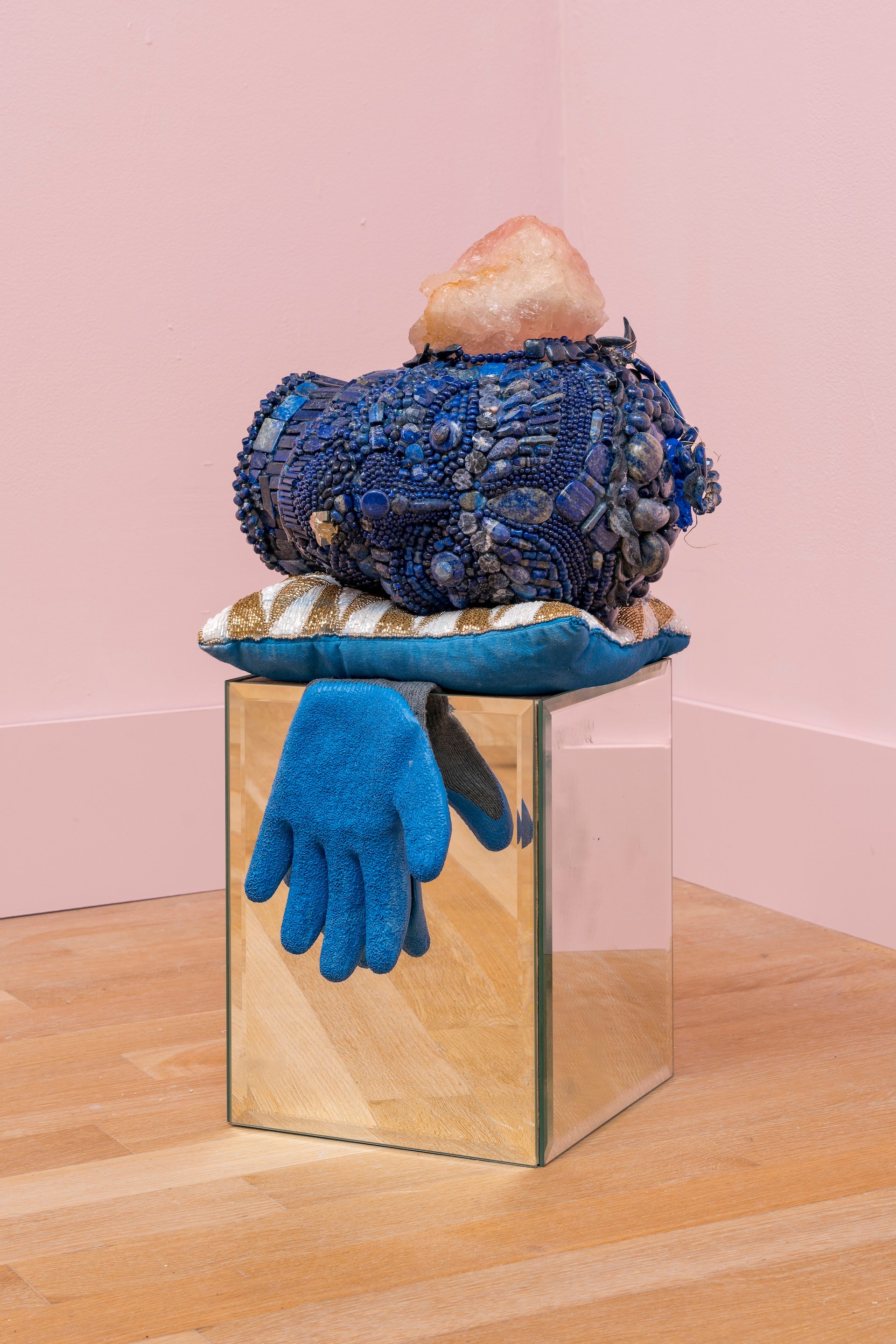
vanessa german, Altar of Grief and Transformation from the place where I was scammed by humans out of $700 one night in chicago when I had a mean toothache and the pain had blinded my common senses., 2024
Courtesy of the artist / Kasmin, New York; Logan Center Exhibitions; and the Richard and Mary L. Gray Center for Arts and Inquiry at the University of Chicago. Photo by Robert Chase Heishman and Robert Salazar
Over the past ten years, I’ve stopped fighting myself in the studio. I stopped fighting the feeling of falling in love when I’m working. I used to think these things aren’t supposed to happen when you’re working. But I definitely experienced more true love in the studio. That’s why I'm still alive. I experience dancing in the cosmos when I go into the material. Working with a material isn't just manipulating material, it's going into the universe of a material and being transported from an ordinary place to an extraordinary one, like inside a process.
Process for me is like time travel. It is a magical transformation. I have to do so much managing of scale and weight and capacity that I experience my heart as fully awake and active when I’m in the studio. That makes sense, because your heart sends you 40,000 neurons. Your heart is doing more in your body than anything else. My heart is really active in the studio. I could use my creative practice as the thing itself, as a form of medicine, as love, as peace, as grace. That's an experience I have in the studio. It's probably why I'm obsessed.
- vanessa german: At the end of this reality there is a bridge—the bridge is inside of you but not inside of your body. Take this bridge to get to the next _______, all of your friends are there; death is not real and we are all dj’s, until 15 December, Richard and Mary L. Gray Center for Arts and Inquiry at the University of Chicago


